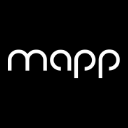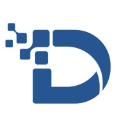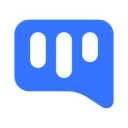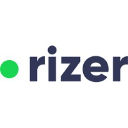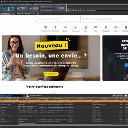Sales Prospecting software: purchase guide
Sales Prospecting Software: Find, Engage, and Convert Better Leads
Sales prospecting software is designed to help modern teams find, qualify, and engage potential customers more effectively. In today’s competitive sales environments—where timing, personalization, and data accuracy make all the difference—the right platform can dramatically improve your team’s efficiency and conversion rates.
These tools go far beyond basic contact scraping. They let you define your ideal customer profile, segment audiences intelligently, integrate seamlessly with your CRM, and tap into real-time insights that help you start better conversations. Whether you're pulling lead lists from LinkedIn, tracking buyer behavior on your site, or launching automated email sequences, a smart prospecting platform helps your team work faster without losing relevance.
Let’s walk through what these tools actually do, how to get value from them, and how today’s best platforms compare.
What can sales prospecting software really do?
Lead identification and targeting
It all starts with finding the right people. Prospecting tools help you discover new leads across LinkedIn, intent databases, your own site traffic, and more. You can use filters and AI to home in on the people who actually match your ICP—not just anyone with a job title.
Segment by industry, seniority, revenue, behavior, and more
Use firmographic and demographic filters for precision
Auto-update lead lists as data changes
Example: A SaaS company targeting mid-market fintech firms in Europe uses LinkedIn filters to build dynamic prospect lists by region, job title, and company type.
Data enrichment and verification
Manual research slows you down. Modern platforms enrich your records automatically with verified emails, phone numbers, company info, and social profiles.
Automatically fill missing CRM fields
Append firmographics and technographics
Remove duplicates and maintain clean data
Example: After a webinar, a marketing team enriches registrant data with job title and company size to build better nurture flows.
Outreach automation and CRM integration
Reps can build automated, personalized outreach sequences—via email, LinkedIn, or SMS—and push all the engagement data back to your CRM.
Launch and track cold outreach campaigns
Sync activity directly to Salesforce, HubSpot, or Pipedrive
Trigger actions based on opens, clicks, and replies
Example: A BDR runs a three-touch email and LinkedIn campaign with custom intro lines pulled from job titles, synced straight to HubSpot.
Lead scoring and analytics
Not every lead deserves the same attention. Scoring helps your team focus on the ones who are ready to engage.
Score based on ICP fit, engagement, and funnel activity
Flag high-intent leads for faster follow-up
Analyze what content and cadences drive meetings
Example: Any lead who opens two emails and clicks the pricing link gets routed to a fast-track outreach queue.
Marketing data and ad platform integration
Prospecting doesn’t live in a silo. These tools now integrate with marketing platforms to align campaigns and outreach strategies.
Retarget anonymous visitors from your website
Push warm CRM segments into ad platforms like LinkedIn
Use real-time behavior to trigger prospecting outreach
Example: A marketing team syncs pricing page visitors to LinkedIn Ads while the SDR team follows up with personalized outreach.
Sales Prospecting Software Comparison
| Software |
Key Features |
Strengths |
Limitations |
Pricing |
| Mapp Acquire |
Data collection, segmentation, analytics |
Great for large-scale data analysis |
Less outbound automation |
On request |
| D-ANA |
Automated lead discovery, segmentation, scoring |
Lean and focused for small teams |
Limited public info |
On request |
| Kanbox |
LinkedIn scraping, inbox extension, analytics |
High-rated for LinkedIn workflows |
Requires browser extension |
On request |
| Rizer |
Lead gen, collaboration, outreach workflows |
Good for team coordination |
UI learning curve |
On request |
| Surfe |
LinkedIn-CRM sync, auto enrichment, smart filters |
Excellent data sync, fast workflows |
LinkedIn-focused |
On request |
Who benefits most from sales prospecting tools?
SDR teams building daily pipelines
Startups automating outreach with limited headcount
B2B marketers aligning campaigns with outbound follow-up
Account-based teams doing high-touch outreach
Revenue teams targeting narrow ICPs with high-value offers
Whether you're a solo founder or managing a multi-rep team, a good prospecting tool gives you structure, speed, and more predictable pipeline generation.
Getting implementation right
1. Define your ICP
List your target industries, roles, company sizes, regions, and buying triggers. Use this to build search filters and personalize your content.
2. Connect your stack
Link your CRM, outreach tools (Lemlist, Outreach), and data sources (Clearbit, Dropcontact). Leads should flow automatically between systems.
3. Set up lead scoring
Use engagement, job title, content views, and deal stage to assign lead priority. This helps reps know who to reach out to—and when.
4. Create outreach sequences
Design different messaging tracks based on segment. Add personalized touches using dynamic fields like industry or tools they use.
5. Train your reps
Make sure reps know how to use filters, score leads, and personalize messages. Run small pilots, test results, and refine quickly.
6. Measure and optimize
Track reply rates, meeting conversions, and deal velocity. Make changes to messaging, timing, and cadence based on what actually works.
7. Stay compliant
Always follow GDPR, CAN-SPAM, and other privacy laws. Use opt-in lists, avoid scraping in restricted areas, and document consent practices.
Common integrations
CRM: Salesforce, HubSpot, Zoho
Outreach: Lemlist, Reply.io, Outreach
Enrichment: Clearbit, Dropcontact, Lusha
Ads: LinkedIn, Meta, Google Ads
Analytics: Looker Studio, Tableau
Why use a prospecting platform?
Build better lists in minutes
Automate smart, human-feeling outreach
Align sales and marketing around buyer signals
Prioritize high-intent leads
See what works, where, and why
Your team doesn’t need to send more emails—they need to send the right messages, to the right people, at the right time.
What’s changing in 2025?
AI-powered intent signals
Tools like 6sense and Bombora tell you which companies are actively researching your solution—so reps stop guessing and start reaching out with purpose.
Hyper-personalization at scale
Dynamic content and enriched data make messages feel hand-written, even when they’re automated.
First-party data over third-party lists
As privacy rules tighten, your best leads come from your own channels: website visits, live chat, product usage.
Sales + marketing = one team
Shared dashboards, aligned segments, unified workflows—prospecting becomes a joint effort across the funnel.
New formats: video and voice
Reps use Loom videos, LinkedIn voice notes, and personalized GIFs to break through cold outreach fatigue.
Live data enrichment
Tools now update lead profiles in real time—when job titles change, companies raise funding, or a new tech gets added.
Built-in compliance
The best tools include audit logs, consent tracking, and user permissions—no more retrofitting compliance after the fact.
Final thoughts
Prospecting isn’t about volume—it’s about quality, timing, and personalization. A strong prospecting platform helps your team connect with the right people at the right moment and keeps your pipeline full of real opportunities.
Surfe and Kanbox are top picks for LinkedIn-centric workflows. Rizer supports team collaboration with structured outreach. Mapp Acquire and D-ANA stand out for rich data segmentation.
Pick the tool that aligns with your strategy, get your stack connected, train your team—and turn your prospecting into a competitive edge.
